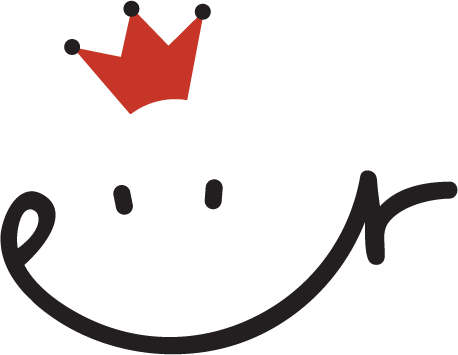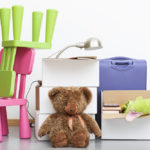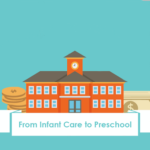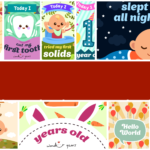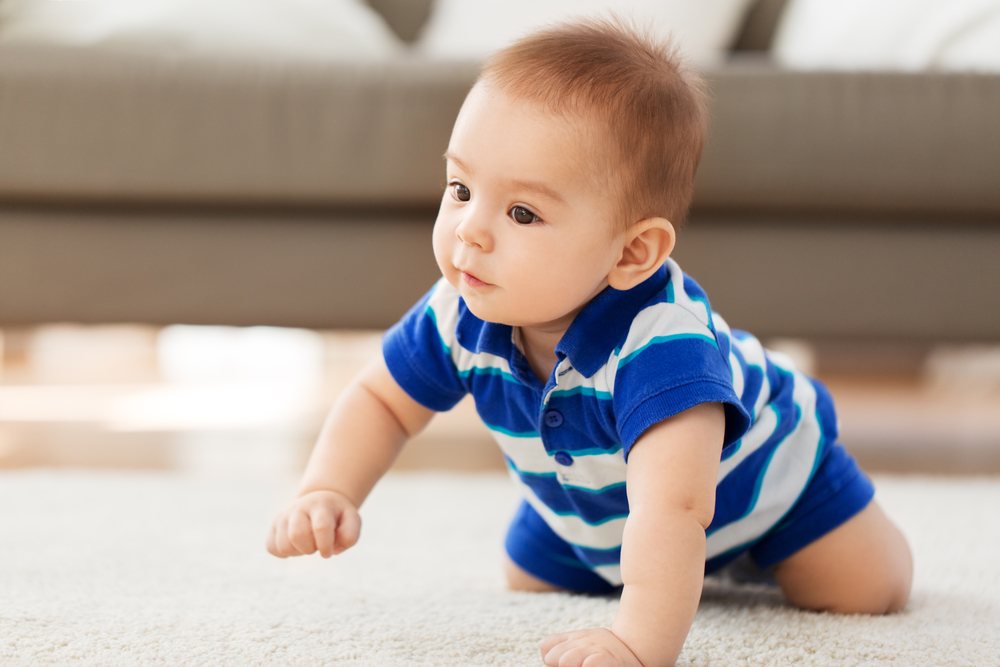
Say goodbye to the newborn days!
As your baby becomes more alert and mobile, every day will be filled with new adventures as he or she starts exploring. Every experience and sound – from cuddling before your baby sleeps to listening to you talking – will go a long way to help him or her learn about the world.
Most babies reach certain milestones at around the recommended guidelines, but do allow room for your baby to grow and develop at his or her own pace.
Here are some things that you can expect your baby to do from four to six months.
Emerging motor skills
By now, your baby will start wiggling and kicking more purposefully with his or her arms and legs. It won’t be long until you notice your baby rocking on his or her stomach and finally roll over. His or her head control will be better by now, with strong sets of muscles.
Most babies this age raise their heads when the lie face down – some might even try to push themselves up to bear weight on their legs. At around six months, many babies will start to sit independently when they are put in an upright position.
Better hand-eye coordination
Watch as your baby grasp your finger, a rattle or a soft object – anything within his or her reach is likely to end up in his or her mouth too!
You might also notice your baby trying to pull objects closer with a raking motion of the hands.
Clearer vision
With clearer vision, your baby is starting to distinguish subtle shades of reds, blues, and yellows. He or she might show interest in more complex patterns and shapes. Your baby might be able to focus his or her gaze on a toy or stare at his or her reflection. Try rolling a ball across the floor – your baby will turn his or her head to follow the action.
Exploring new sounds
At this age, babies start to babble chains of consonants (e.g. baa baa) Your baby might respond to sounds by making his or her own sounds, and he or she can now use his or her own voice to express joy and excitement.
Your baby might even recognise his or her name when he or she is being called; he or she might also pick up the different emotions through the tone of your voice (e.g. showing a surprised look when being told “no”).
What you can do to help your baby’s development from 4 to 6 months
At this age, learning and playing are what your baby enjoys doing the most. But that doesn’t mean that you need the latest educational toys or go out of your way to capture your baby’s attention.
You can help your baby’s growth and development at this stage through simple things, such as:
Talking and responding to your baby
Ask lots of questions and respond to your baby;s coos and gurgles. A good place to start is by describing what you see, hear and smell around you – be it at home or while you’re out and about.
Use simple words such as “hot”, “cold”, “dog”, “go”, “baby” – and do take note to adjust the tone of your voice and facial expression as these can communicate ideas and emotions to your baby.
Explore positions
During tummy time, hold a colourful toy or rattle to encourage your baby to pick up his or her head, or practice rolling over.
Once your baby is comfortable with tummy time and rolling over, hold your baby’s hands while he or she is lying down on the back and count to three as you gently pull your baby to a sitting and standing position.
Toys that encourage movement
At this age, babies are attracted to colourful toys, especially those that make sounds. Options such as a musical toy, a rattle with handle or a soft ball are great to start off with.
Be sure not to offer no more than two toys at once so as not to over-stimulate your baby and help him or her focus. Place one toy slightly further away from your baby to encourage him or her to stretch and reach for it. Shake a rattle behind your baby’s head and let him or her turn and grab it.
Babies are curious at this stage, so let your baby watch his or her movements in a mirror.
Reading time
Although your baby does not seem to understand words yet, reading to your baby promotes speech and thought development. Watch as your baby soak in your words and even mimic the sounds you make.
Books with large, brightly coloured pictures are a great way to start the reading adventure. Describe what is happening on each page, and point to and name common objects.
Play baby’s favourite games and songs
Some games that you can play with baby at this stage are:
- Cover your face with your hands, then remove your hands and say, “peekaboo, I see you!”
- Ask, “Where are your toes?” – then touch your child’s toes and say, “Here are your toes!”
- Hide one of your baby’s toys with the corner of a blanket and encourage him or her to look for it
- Play “Patty-cake” with your hands
Music can also help to calm, entertain and teach your baby about rhymes and words. Sing to your baby or play his or her favourite lullabies.
Take cues from your baby
Look out for signs of tiredness from your baby, such as when he turns away, closes his or her eyes, or gets fussy – then take a break from whatever you are doing together.
Get to know your baby’s personality, temperament, likes and dislikes, and respond to his or her needs accordingly. This will help to build your baby’s trust in you.
When should you be worried?
It is normal for your baby to reach some developmental milestones on schedule or ahead of time, but lag behind on others.
However, it is good to be aware of the warning signs of developmental delay and see your baby’s doctor if you notice any of these symptoms by the age of 6 months:
- Seems extremely floppy and has very stiff or tight muscles
- Reaches with only one hand
- No improvement shown in head control
- Doesn’t respond to sounds, such as by being shocked at sudden loud noises
- Doesn’t reach for or bring objects to his or her mouth
- Doesn’t attempt to roll over or sit
- Appear to have an eye or eyes that consistently turn in or out
- Shows no interest in babbling
- Doesn’t seem to enjoy being around people or spontaneously smile
While keeping in mind that every baby is unique, be sure to listen to your instincts too. It is best to detect a problem earlier so that it can be checked and treated by a health professional.

